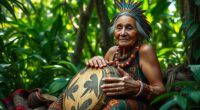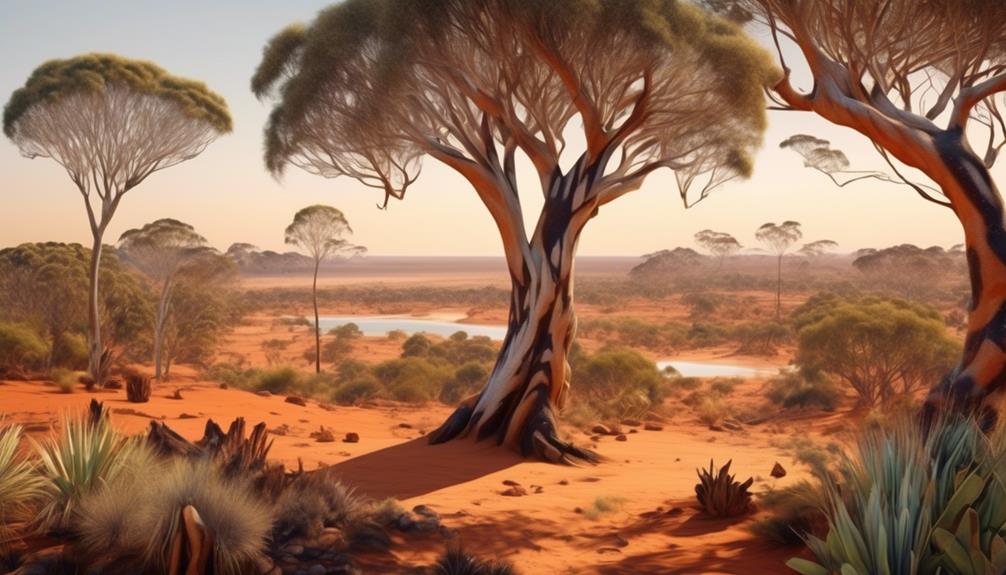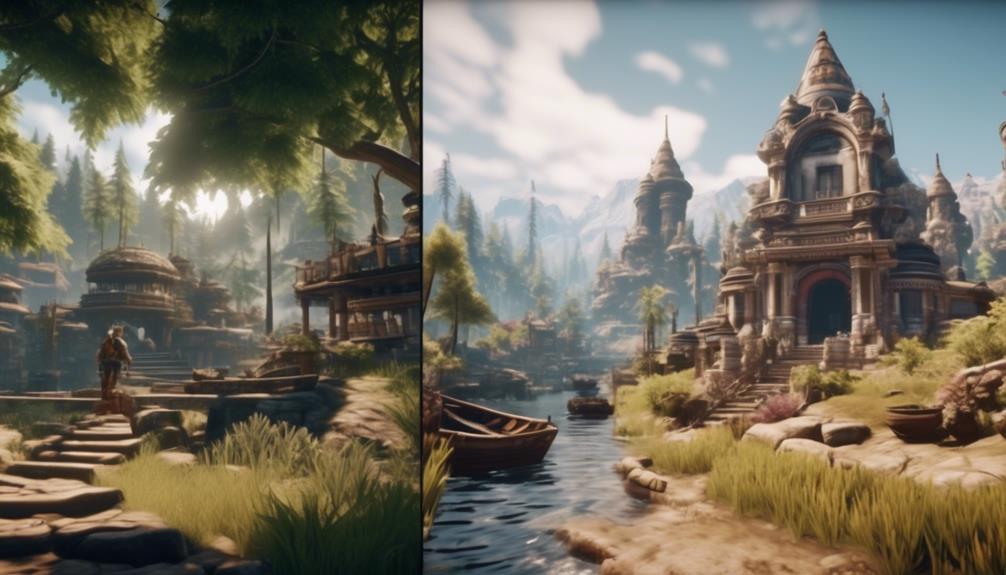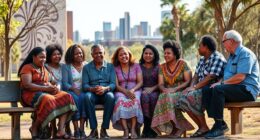Before 1788, Aboriginal education was an experiential, land-centered system deeply connected to storytelling, observation, and participation. You’d learn from elders who shared stories about plants, animals, and survival skills, using metaphors and allegories to make lessons memorable. Knowledge was passed orally across generations, reinforcing cultural values, spiritual beliefs, and community bonds. This holistic approach created a meaningful relationship with land and culture, and if you keep exploring, you’ll discover how these traditions shaped their way of life.
Key Takeaways
- Education was integrated into daily life, focusing on land, nature, and survival skills through storytelling and observation.
- Elders used stories with metaphors to teach cultural values, history, and environmental knowledge.
- Learning was experiential, involving direct participation, land-based walks, and practical engagement.
- Oral traditions ensured knowledge was passed across generations, maintaining cultural continuity.
- Education fostered community bonds, emphasizing respect, social responsibilities, and a deep connection to land.
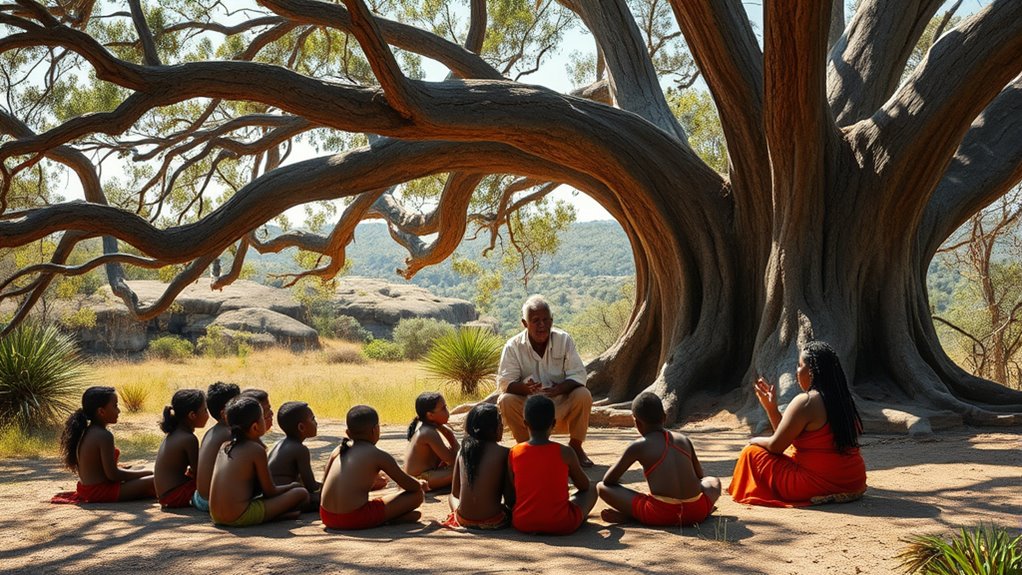
Aboriginal bush schools provide a unique educational experience that reconnects students with traditional lands, culture, and ways of learning. Before 1788, education wasn’t confined to formal classrooms; instead, it was woven into daily life through a rich tapestry of indigenous knowledge and storytelling traditions. As a learner in this environment, you would have absorbed lessons from elders, who shared essential information about the land, plants, animals, and survival skills through stories passed down over generations. These stories weren’t just entertainment—they were the primary means of transmitting cultural values, history, and practical knowledge. Every narrative carried lessons about respect for nature, social responsibilities, and spiritual beliefs, shaping your understanding of the world around you.
Aboriginal bush schools taught through stories, connecting land, culture, and survival skills across generations.
In these traditional bush schools, learning was highly experiential and contextual. Instead of textbooks, you gained knowledge by observing, participating, and listening to elders recount stories that connected directly to your environment. For example, you might have learned how to identify edible bush foods through stories that described their characteristics and significance. These storytelling traditions served as mnemonic devices, ensuring that important knowledge was remembered and passed on accurately. The stories often contained metaphors and allegories, making complex ideas accessible and memorable, reinforcing cultural and ecological lessons simultaneously.
You would have also learned indigenous knowledge embedded in the land itself. The land was a living classroom, offering endless opportunities for practical education. Elders might have taken you on walks, pointing out specific plants and animals, sharing their uses and significance through stories that embodied ancestral wisdom. This approach created a profound connection to the environment, emphasizing that learning was a continuous, life-long process rooted in the land. This oral tradition ensured that cultural stories and knowledge remained vibrant and adaptable across generations. The oral tradition meant that every story was a piece of a larger puzzle—integrating history, spirituality, and survival skills into a cohesive worldview.
Because these storytelling traditions were central to education, they fostered a strong sense of community and identity. Knowledge was shared openly and respectfully, strengthening social bonds and ensuring cultural continuity. Indigenous knowledge wasn’t static; it evolved with each generation, adapted to new circumstances, yet always rooted in the stories that linked the past to the present. As you grew within this system, you learned that education wasn’t separate from daily life but an integral part of being connected to land, ancestors, and community. This holistic approach created a rich, meaningful learning environment—one that emphasized understanding, respect, and a deep sense of belonging.
Frequently Asked Questions
How Did Aboriginal Students Learn Survival Skills Through Bush Schools?
You learn survival skills through traditional methods and oral transmission, passed down from elders to younger generations. In bush schools, elders teach you how to find food, make tools, and navigate the land by sharing stories and demonstrations. This oral transmission guarantees you understand the environment deeply, gaining practical knowledge that’s essential for survival. These methods connect you to your culture and the land, fostering skills that have sustained your people for generations.
What Materials Were Used to Teach Traditional Stories and Histories?
You learn that storytelling techniques were central to passing down traditional stories and histories. Elders used oral storytelling, gestures, and songs to keep histories alive, often incorporating sacred objects like bones or carvings as symbols. These sacred objects added spiritual meaning and helped illustrate stories vividly. Through these methods, you connect deeply with your culture, ensuring your ancestors’ knowledge and sacred stories are preserved and understood across generations.
How Did Bush Schools Accommodate Different Aboriginal Languages?
You see, bush schools adapted to language diversity by using storytelling, songs, and oral traditions tailored to each community’s language. Teachers, often elders, used local dialects, ensuring teachings resonated deeply. These flexible teaching methods allowed different Aboriginal groups to pass on their histories and skills effectively, respecting their unique languages. This approach kept cultural knowledge alive and fostered strong connections within communities, despite their linguistic differences.
Were There Specific Age Groups or Genders Taught Separately?
Imagine learning where gender roles and age distinctions shaped your experience. You’d find that boys and girls often learned separately, with specific skills for each gender, while age distinctions determined who taught what and when. Younger children focused on foundational knowledge, while older students prepared for adulthood. This structured approach helped guarantee everyone learned what they needed, respecting cultural norms around gender and age in their community.
How Did Bush Schools Influence Early Intercultural Exchanges?
You see, bush schools played a crucial role in early intercultural exchanges by sharing traditional knowledge between Indigenous communities and newcomers. These schools fostered cultural exchange, allowing both groups to learn from each other’s practices, stories, and skills. As a result, they built mutual respect and understanding, shaping relationships that influenced future interactions. This exchange of traditional knowledge laid a foundation for ongoing intercultural dialogue and cooperation.
Conclusion
So, before 1788, you’d have learned everything from your elders—no fancy classrooms or textbooks required. You’d master survival skills, stories, and traditions through hands-on experience, not PowerPoint slides. Imagine thinking that today’s “innovative” education could compete with a system that’s thrived for tens of thousands of years. Maybe, just maybe, the real “school of life” is still open, and it’s been running perfectly well all along—no tuition needed.

